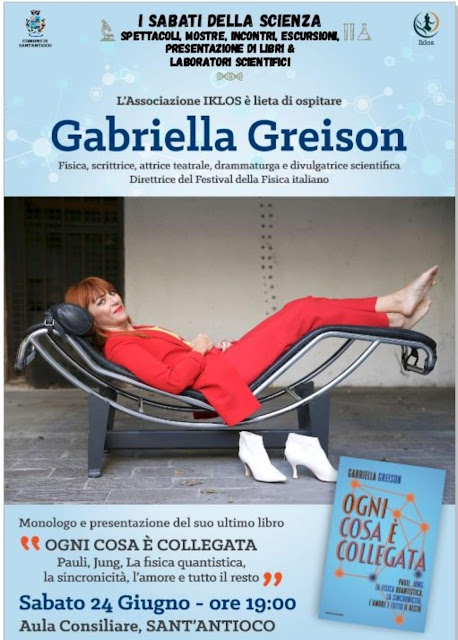Interview with Holly Rushmeier. Eurographics 2012, Cagliari (Linguaggio Macchina, 22 magio 2012)
 Holly Rushmeier (Professor of Computer Science and Chair at Yale University) was in Cagliari for Eurographics 2012 and she kindly accepted to answer my questions. The last keynote was dedicated to your talk "Material Appearance Modeling" where you showed applications several fields as industrial design and cultural heritage.
Holly Rushmeier (Professor of Computer Science and Chair at Yale University) was in Cagliari for Eurographics 2012 and she kindly accepted to answer my questions. The last keynote was dedicated to your talk "Material Appearance Modeling" where you showed applications several fields as industrial design and cultural heritage. May you summarize this connections between research and technology in a few words?
«Applications such as industrial design and cultural heritage are always posing new questions and defining new requirements. These questions and requirements inspire new ideas that push the research forward».
You point your attention also on Computer Graphics applications in biology, in particular about relationship between graphics and perception of birds. What conclusions do you reach?
«This work is still in progress. We have the system built to gather the data. The biologists still have to use the data to make their conclusions about how bird vision co-evolved with their appearance».
What can you say about the organization of Eurographics 2012 and about the quality of scientific simposium?
«The organization and quality of Eurographics was excellent this year. The sessions all ran smoothly, and there was a very interesting exhibition of new products in addition to the technical content. There were many important and inspiring papers presented, including papers on inexpensive hyperspectral scanning and methods for selecting procedural textures and reflectances for modeling new scenes».
What is your opinion about the city of Cagliari?
«Visiting the city was a wonderful experience. I had been unaware of the history, such as the 400 years of Spanish/Catalonian rule. I enjoyed seeing the nature preserve, and the incredible number of flamingos. I also had a good time looking around at the shops».
Andrea Mameli www.linguaggiomacchina.it 22 May, 2012
- From The Rise of Big Data (The New York Academy of Sciences, Diana Friedman, March 16, 2012):
Data visualization takes numbers that are either generated by a large calculation or acquired with a measurement and turns them into pictures, says Holly Rushmeier, chair and professor, Department of Computer Science, Yale University, and a judge for the Academy's Blavatnik Awards for Young Scientists. For example, a project might take numbers representing flow going through a medium and turn them into an animation.
"Visualization allows you to look at a large volume of numbers and look for patterns, without having a preconceived notion of what that pattern is," says Rushmeier. In this way, visualization is both a powerful debugging tool (allowing researchers to see, through the creation of a nonsensical picture, if there might be a flaw with their data) and an important means for communication of data, whether to other researchers or to the general public (as in the case of weather forecasts). So perhaps the old adage needs to be re-written: Is a picture now worth a thousand lines of code?
"There are many flavors of visualization," says Rushmeier. Information can be mapped onto a natural structure, such as valves being mapped onto the heart, or an entirely new picture can be created (data without a natural structure is referred to as high-dimensional data). The classic example of high-dimensional data is credit card data, says Rushmeier, "but there is a lot of high-dimensional data in science."
Rushmeier is currently immersed in 3D mapping, working closely with an ornithologist who studies bird vision. He records light waves to which birds are sensitive, from the UV to the infrared, to get a better sense of how bird vision evolved and for what purposes (e.g., mating and survival). Through 3D mapping, Rushmeier is able to take the ornithologist's numerical data and simulate the actual viewpoint of the bird onto different 3D surfaces. - Experimental Microscopic RTI Dome (by chicaseyc, April 20, 2012):
I particularly appreciated a discussion with Holly Rushmeier from Yale University about what we mean by accuracy, high resolution, and quality in general? In particular what is even measurable, and how should we be measuring and recording it? Holly agreed that this is an area that needs some attention, and it will take the work of multiple institutions working together to come to any guidelines.



Commenti